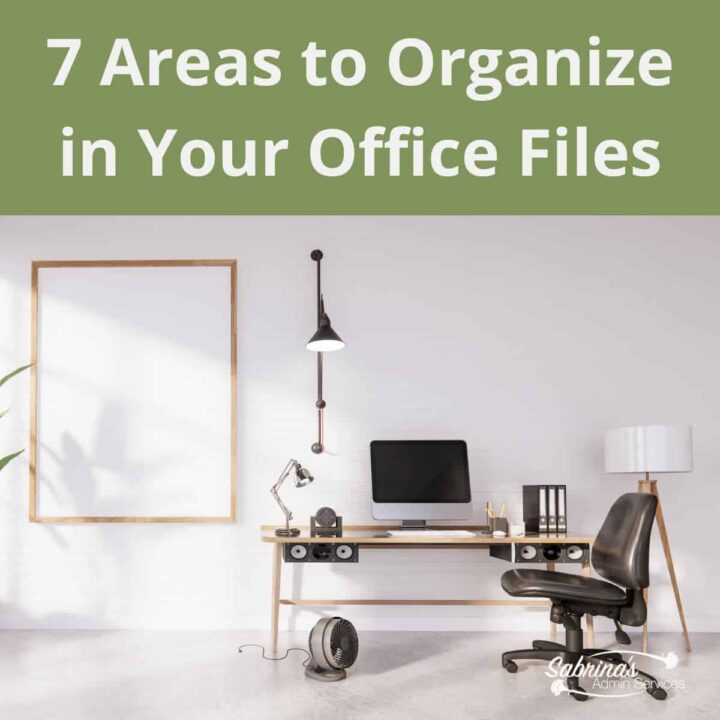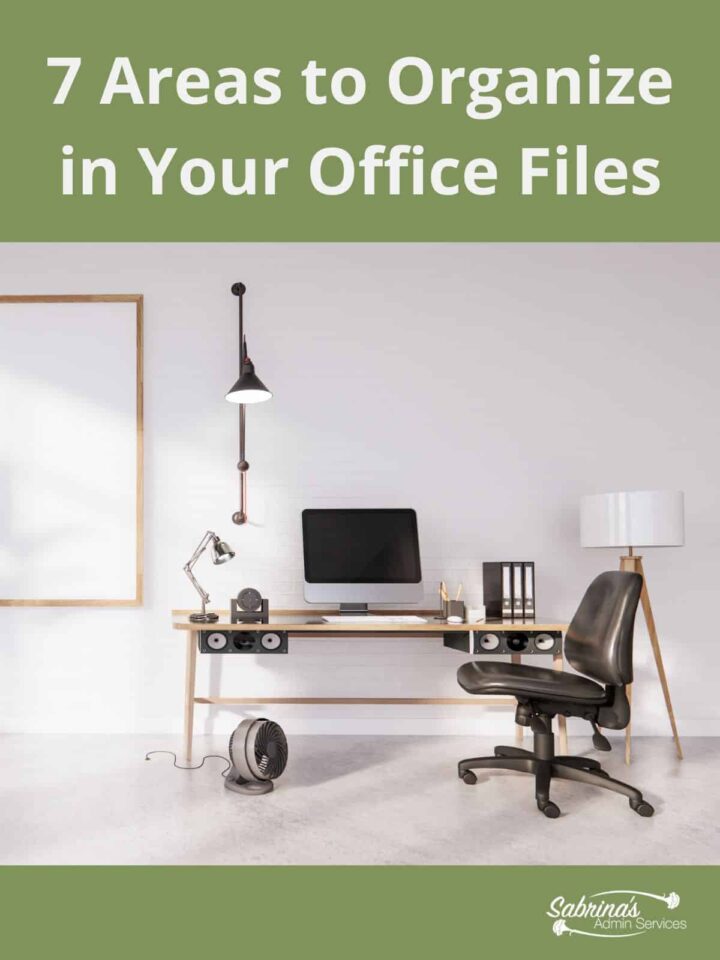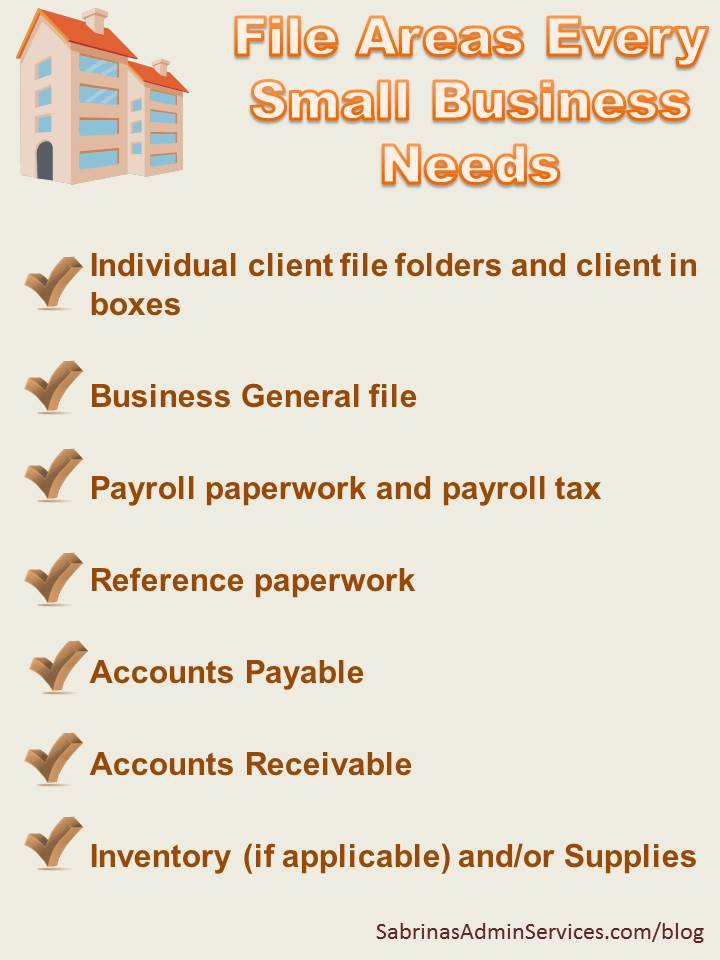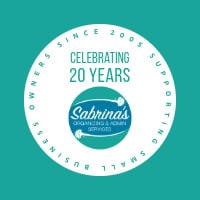Many owners view filing systems as a necessary evil since taking the time to set them up and maintain them doesn’t help make money for their business. So, they quickly file papers in groups that may or may not be appropriate to get it out of the way and give them more time to do things that help them make money. But then they get frustrated when they can’t find what they are looking for in the future. The reality is that all businesses need to keep well-organized and retrievable office files and have systems in place to manage all these areas. This post talks about the seven areas of organizing office files. Read on to find out more.
7 areas to organize in your office files
- 1: Individual client file folders and the client “in” boxes area
- 2nd area to organize office files is the Business General file area
- 3: Payroll paperwork and payroll tax area
- The fourth area to Organize Office Files is the Reference paperwork area
- 5: Accounts Payable area
- 6: Accounts Receivable area
- 7: Inventory area of the office
- Other paper management tips
Keep in mind that keeping your papers and other reference documents organized will save time when you need to file AS WELL AS when you need to retrieve something. Keeping these papers organized will also allow you to retrieve them in rare emergencies like tax audits. It will also help you when you must pay your taxes each year. Visit Tips To Be Better Prepared for EOY Tax Return for more help on getting prepared for doing your tax returns.
Here are some suggestions for what to keep in your small business files. Review and set them up sooner rather than later. You will be happy that you did.
1: Individual client file folders and the client “in” boxes area
Each client should have long-term client file folders with contact information and other correspondence in them. Then, they should have an “in” box bin like the one below to hold current projects in their office. This bill will separate the current from the long-term storage and make the stuff they need to go through less frustrating and stressful.

Lateral File Cabinet with Lock by INTERGREAT
Buy Now →
Cubby System – File Organizer wood box 3 slots
Buy Now →(affiliate)
Please note these are affiliate links through Amazon (affiliate), and at no additional cost, I will earn affiliate fees if you decide to make a purchase.
2nd area to organize office files is the Business General file area
This area includes papers like rent, utilities, etc… Bills to pay and bills you already paid work nicely in this area. You can also use this space for Petty cash and keep track of your general receipts in this area. I like to use an accordion folder to store receipts. They have different sizes depending on how many receipts you get over a year. Here are examples from Amazon (affiliate) of a smaller receipt accordion folder.

Accordion File Folder Small Holder File 13 pockets
Buy Now → Buy Now →
Buy Now → (affiliate)
3: Payroll paperwork and payroll tax area
This is crucial for all businesses. Remember, this doesn’t just include payroll. It also contains subcontractors too. Any cost of labor you may have needs to be stored properly to make it easier for you to manage. Using binders works nicely for the different agencies to keep the papers straight. Include in the binder the federal, state, and unemployment paperwork and local payroll tax payments, which can be stored together using tabs (affiliate) and binders. Visit How to Organize Employee Records for more information on how to do this in your business.
Want to create a binder for bookkeeping and payroll papers? Visit our post: How to Create a Well-Organized Small Business Bookkeeping Binder
The fourth area to Organize Office Files is the Reference paperwork area
Resources and research you may use for articles, advertisements you created or wish to use, inspirational items, etc, can be stored in this area. Ensure you use these items before saving them because this area can get out of hand quickly. Be specific about why you are keeping these things.
This area could also be on your computer or stored in the cloud. It can include communication with clients (affiliate), work you did for clients (affiliate), research for new projects, etc. If you have it stored in the cloud or on the computer, check out our Spring Cleaning Digital Files Like a Rockstar.
5: Accounts Payable area
Sort this area by invoice due dates. Then, have an area for paid bills. An in-box works nicely for this area if you do not keep old papers or unnecessary articles in it. Think of it this way: This bin is ONLY for “bills to be paid.” When you pay the bills, the container should be empty. Visit Accounts Payable Tips Every Owner Needs to Know to get more information about this area.
Using things with the day of the week or monthly dates on them will help sort these papers so that when the bills come due, you know what you need to pay first. I found these on Amazon (affiliate) (affiliate) that may work for you.

Notebook: Bill Tracker Planner – 8.5″ x 11″ 100 Pages
Buy Now →
Bill Holders 2 Pieces Acrylic Mail
Buy Now →(affiliate)
6: Accounts Receivable area
This area is essential if you want to keep track of your invoices. Sort your Accounts Receivable area in ABC order by client name. A folder for ‘open invoices’ (unpaid invoices) and one folder for ‘general paid invoices’ works nicely to cover the random invoices you may be sending out. Visit 9 Things Every Owner Needs To Know About Accounts Receivable for more information about how to keep your invoices organized.
7: Inventory area of the office
And the last area is for owners who have inventory. This area needs to be organized. Make an organized area for products to be sold. Keep a folder for your suppliers’ receipts and a separate folder for your receipts after the sale of products. Keep your state sales tax collected receipts and submitted payments in an area that is easily accessible at tax time. This method will ensure you pull them to make sure you pay everything before the end of the year.
Below is inventory shelving I found on Amazon (affiliate) that may work for your supplies in your business.

Sauder Miscellaneous Storage Pantry cabinets, L: 17.99″ x W: 13.94″ x H: 60.00″, Highland Oak finish
Buy Now →
Shelving Unit, Heavy Duty 200lbs/shelf (55”H x 48”W x 20”D), for Indoor/Outdoor Organization
Buy Now →(affiliate)
Other paper management tips
Here are more tips to help you with your office papers. Remember to clear out these files each year, which will make your filing cabinet (affiliate) less cluttered and more functional. The Tips On How Long I Should Keep Business Records post will help you figure out what to keep and what you can shred and remove.
Setting up these systems will save you time and money because you can quickly find what you need. I hope this helps in your business system. If you need help with your small business, I can help you!
And, if you need help remembering the purposes of each file folder, check out this color code infographic by Quill.com to help you determine what color to use when you set up your filing systems.
I hope this helped you get your office papers in tip-top shape for a successful business. Do you have tips to help you get your office organized? Please leave a comment below so we can continue the conversation.
Please note these are affiliate links through Amazon, and at no additional cost, I will earn affiliate fees if you decide to make a purchase.
Related Posts:








